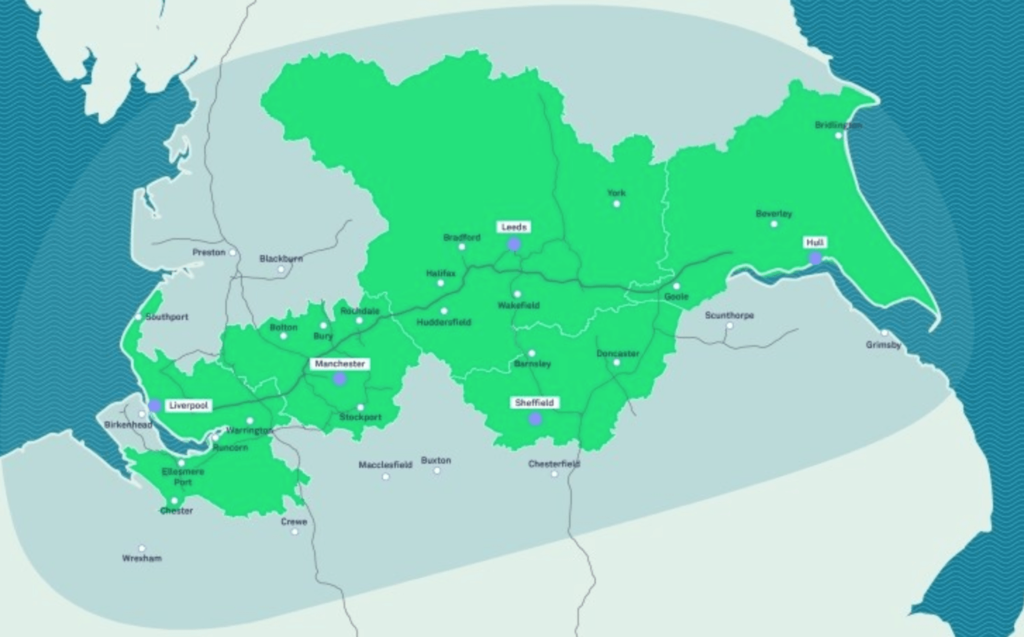In 2019, we reported on the Northern Forest Project, which was established just one year before in 2018 and designed to plant 50 million trees over the next 25 years, improving the management of existing woodland over 100,000 square miles of land stretching from Liverpool to Hull.
So far, around 8 million trees have been established, which works out at around 1.33 million a year. While this is impressive, they will need to increase this annual rate to hit 50 million by 2043, 25 years from 2018.

Return of the Tree:
We lost tens of thousands of ancient woodlands in the 40 years after World War II. During these 40 years (approx 1945 to 1985) we lost more of these woodlands than in the previous 400 years. In the UK, we only have around 13% woodland cover. The average in mainland Europe is around 37%. Trees absorb CO2 from the atmosphere. This planned new forest is designed to help the government meet its carbon emission target by 2050 – only 26 years away!
“More trees mean better health. Trees can clean the air, cool the temperature, quieten the noise and lighten your mood. Planting more trees means investing in our future health and cutting the future costs of health care too; it’s also a strategy that benefits the most vulnerable in society.”
Quote from The Northern Forest Manifesto
The Main Benefits:
The Northern Forest is already providing benefits, including:
- £43 million of economic uplift every year in some of the most deprived areas of the UK
- an additional 19,000 tonnes of carbon locked up each year – the equivalent to driving 70 million miles in a family car
- a publicly accessible woodland now less than a 10-minute walk away for over 300,000 more households
- more than 423,000 cubic metres of water stored in locations most likely to reduce flood risk, achieving a 33% improvement in flood mitigation in sites that have been planted.
Apart from helping with climate change, the Northern Forest will increase the creation of new woodland, and also support sustainable management of current woods across the area. These trees will improve air quality, create many thousands of jobs, help mitigate flood risk in catchments, and support the rural economy through tourism, recreation and timber production.
In 2016 the UK planted just 700 hectares of trees. This is woefully off the governments target of 5,000 hectares per annum. The Northern Forest will certainly help this figure. The sad fact is we are losing tree coverage in the UK.
.
Wood – A Sustainable heating source:
It is mentioned that carefully selected parts of the Northern Forest will be used by those who want to burn wood. These will be clearly marked. Burning correctly seasoned wood, from sustainable woodlands is virtually carbon neutral. In fact, correctly burning seasoned wood on a high-efficiency stove, such as an Ecodesign stove, will produce less CO2 compared to allowing the wood to rot on the forest floor. Correctly managed woodlands will help provide this firewood; usually fast, fast-growing trees produce the right amount of wood, which is quickly replenished.
Grow One Tonne of Firewood Every Five Years!
Don’t live close to the Northern Forest but want to produce your own firewood? You don’t need acres of land. As little as 10 x 15m space (half the size of an allotment) would provide around one tonne of firewood every five years. This means a very healthy supply of firewood each year, around 200kg, which is more than enough for most households over the winter months. This is a sustainable, environmentally friendly and free way to keep warm!
What Type of Wood?
You will typically need to plant fast-growing, tough willows, which collectively are known as “super willows”. Willows are tough as they can grow in poor soil, in exposed places and even on rough ground, so you do not need to be overly concerned about having perfectly fertile soil. Willow, however, is not the best type of firewood, and it can be quite difficult to cut. However, if you can cope with these disadvantages, you will be on your way to becoming heat self-sufficient.
The Northern Forest has certainly food for thought with regards to climate change and also sustainable wood burning. You can lean more about this development here.
Do you know how to plant a tree?
You should aways plant a tree when it is dormant, as it’s much less likely to be damaged. In the UK the tree planting season runs from November to March. Before you plant a tree, and when it arrives, you should store it upright, keep away from frost and do not allow the roots to dry – if they look like they are, then spray them with water to help keep them damp.
When preparing the site where you wish to plant the tree, clearly mark the area out. If the area is overgrown, spend some time clearing away foliage. This will make planting much easier, and less foliage will mean fewer plants competing for the water in the ground! If you are planting a number of trees, they should be around 2 metres apart. A wavy approach to planting will look much more natural than a defined regimented line. If you’re planting hedges, then 30cm apart is ideal.








